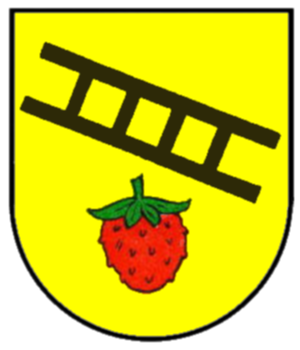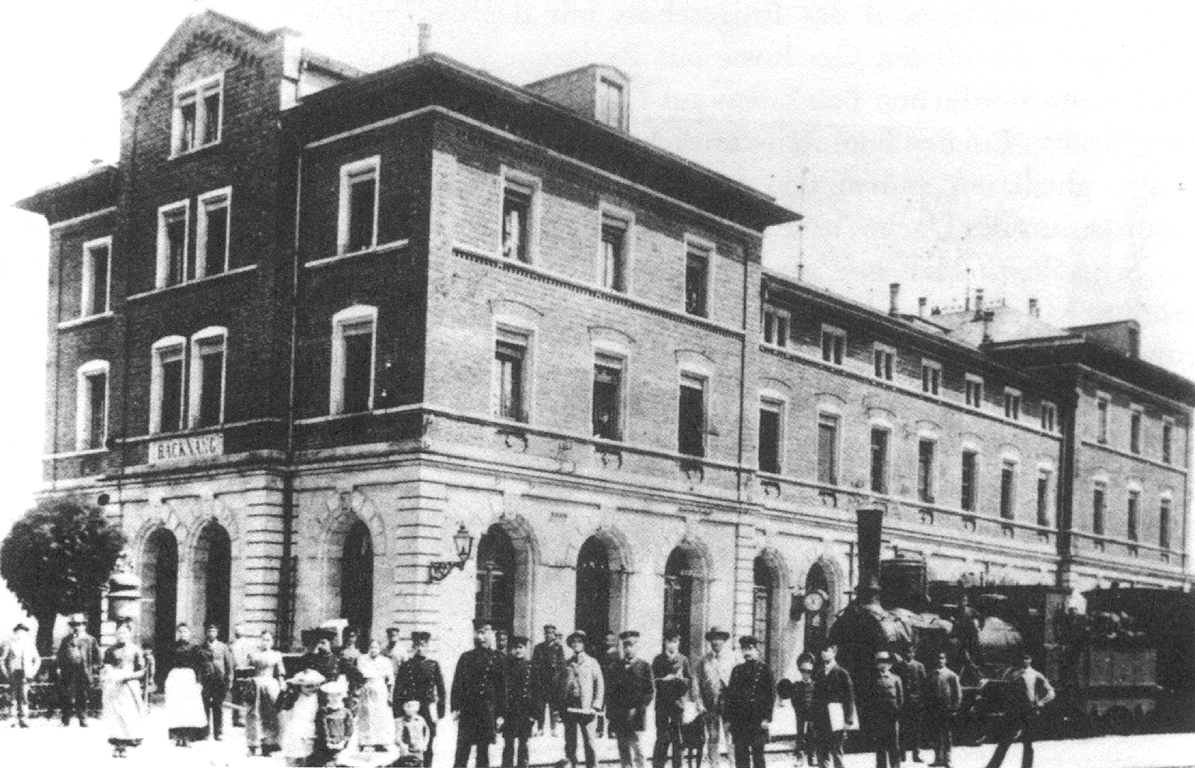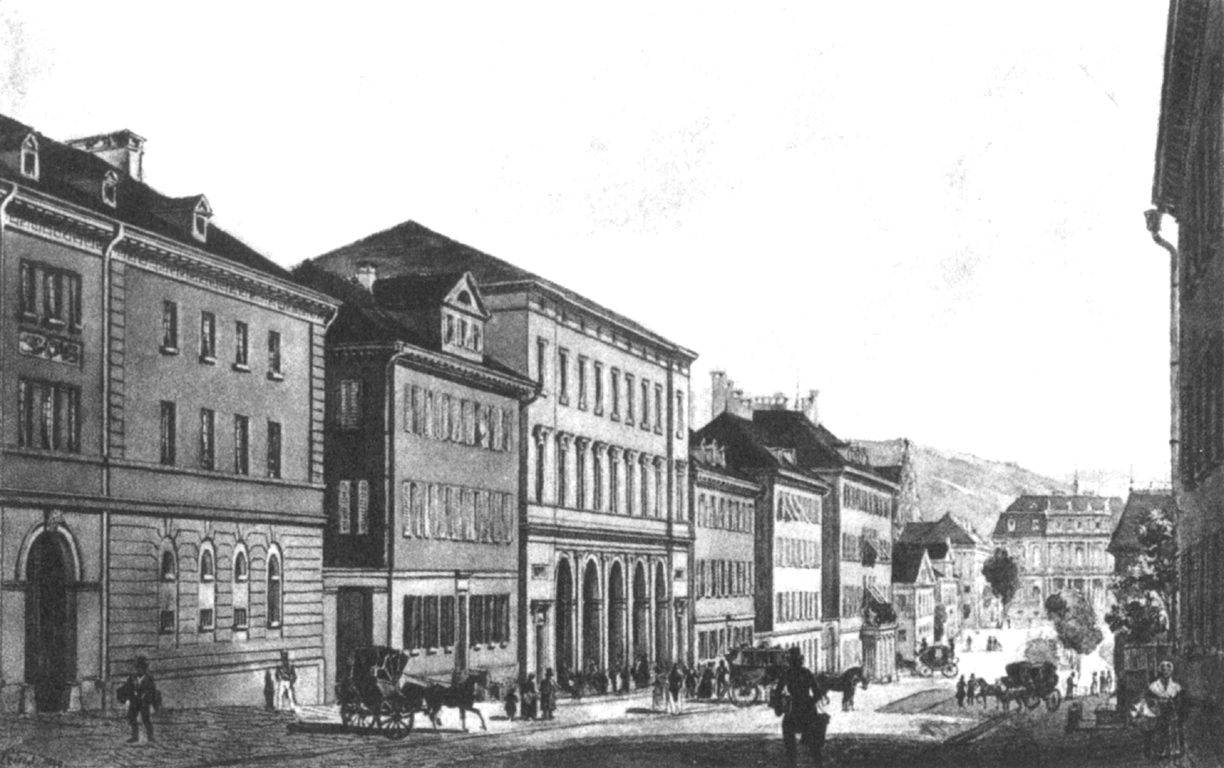|
Fellbach Station
Fellbach station is located in Fellbach on the Stuttgart-Bad Cannstatt–Nördlingen railway in the German state of Baden-Württemberg and is a station on the Stuttgart S-Bahn network. History During the construction of the Stuttgart–Nördlingen railway by the Royal Württemberg State Railways in 1861, it built a station for Fellbach on the fields of the village of Schmiden as the only station between Cannstatt and Waiblingen. It was at that time about one kilometre north of Fellbach and one and a half kilometres south of Schmiden at the boundary of the two villages. Even before the construction of the railway, Fellbach had almost 3,000 inhabitants and was one of the largest villages in Württemberg. The railway was opened on 25 July 1861. The station building has been preserved and is still used as such. It was built of light sandstone and has two full floors and a ''Kniestock'' ("knee jamb", which raises the base of a pitched roof to give more usable space). Windows an ... [...More Info...] [...Related Items...] OR: [Wikipedia] [Google] [Baidu] |
Fellbach
Fellbach () is a mid-sized town on the north-east edge of Stuttgart in Baden-Württemberg, Germany. With a population of approximately 45.430 is the second largest town in the District Rems-Murr-Kreis. The area of the town is . Fellbach was first mentioned as ''Velbach'' in 1121. It was called Vellebach in 1357 and the name Fehlbach was used in around 1800. On 14 October 1933, it was declared a city. After World War II it reached a population of more than 20,000 in 1950 and therefore received the status "Große Kreisstadt". Fellbach has 3 main districts: Fellbach, Schmiden (since 1 January 1973) and Oeffingen (since 1 April 1974). Geography Geographical location Fellbach is located south of the Neckar basin on a plateau between the Neckar and Rems valley at the northern foothills of the Schurwald. The highest points are the Kappelberg (Baden-Württemberg) (469.0 m) and the Kernen (hill) (513.2 m). The metropolitan area extends north into the so-called "Schmidener Feld". Nei ... [...More Info...] [...Related Items...] OR: [Wikipedia] [Google] [Baidu] |
German Railway Station Categories
The approximately 5,400 railway stations in Germany that are owned and operated by the Deutsche Bahn subsidiary DB Station&Service are divided into seven categories, denoting the service level available at the station. This categorisation influences the amount of money railway companies need to pay to DB Station&Service for using the facilities at the stations. Categories Category 1 The 21 stations in Category 1 are considered traffic hubs. They are permanently staffed and carry all sorts of railway-related facilities, as well as usually featuring a shopping mall in the station. Most of these stations are the central (commonly referred to as main) stations (''Hauptbahnhof'' or ''Hbf'') of large cities with 500,000 inhabitants and above, though some in smaller cities, such as Karlsruhe Hauptbahnhof, are regarded as important because they are at the junction of important railway lines. Berlin, Hamburg, Munich and Cologne, the four biggest cities in Germany, have more than ... [...More Info...] [...Related Items...] OR: [Wikipedia] [Google] [Baidu] |
Railway Stations In Germany Opened In 1861
Rail transport (also known as train transport) is a means of transport that transfers passengers and goods on wheeled vehicles running on rails, which are incorporated in tracks. In contrast to road transport, where the vehicles run on a prepared flat surface, rail vehicles (rolling stock) are directionally guided by the tracks on which they run. Tracks usually consist of steel rails, installed on sleepers (ties) set in ballast, on which the rolling stock, usually fitted with metal wheels, moves. Other variations are also possible, such as "slab track", in which the rails are fastened to a concrete foundation resting on a prepared subsurface. Rolling stock in a rail transport system generally encounters lower frictional resistance than rubber-tyred road vehicles, so passenger and freight cars (carriages and wagons) can be coupled into longer trains. The operation is carried out by a railway company, providing transport between train stations or freight customer faciliti ... [...More Info...] [...Related Items...] OR: [Wikipedia] [Google] [Baidu] |
Stuttgart S-Bahn Stations
Stuttgart (; Swabian: ; ) is the capital and largest city of the German state of Baden-Württemberg. It is located on the Neckar river in a fertile valley known as the ''Stuttgarter Kessel'' (Stuttgart Cauldron) and lies an hour from the Swabian Jura and the Black Forest. Stuttgart has a population of 635,911, making it the sixth largest city in Germany. 2.8 million people live in the city's administrative region and 5.3 million people in its metropolitan area, making it the fourth largest metropolitan area in Germany. The city and metropolitan area are consistently ranked among the top 20 European metropolitan areas by GDP; Mercer listed Stuttgart as 21st on its 2015 list of cities by quality of living; innovation agency 2thinknow ranked the city 24th globally out of 442 cities in its Innovation Cities Index; and the Globalization and World Cities Research Network ranked the city as a Beta-status global city in their 2020 survey. Stuttgart was one of the host cities for ... [...More Info...] [...Related Items...] OR: [Wikipedia] [Google] [Baidu] |
Winnenden
Winnenden ( Swabian: ''Wẽnnede'') is a small town in the Rems-Murr district of the Stuttgart Region in Baden-Württemberg in southwest Germany. It lies in a wine-growing area approx. northeast of Stuttgart and has a population of fewer than 28,000. The town is home to the Kärcher Company, makers of cleaning equipment namely pressure washers. History The earliest record of Winnenden is found in a document of 1181 where Gottfried of Schauenburg-Winnenden is mentioned as a witness testifying that Emperor Friedrich I held the castle in the town. Around 1200 the castle, which was then called Windin, came into the possession of Heinrich of Neuffen. In 1277 it was transferred to Konrad von Weinsberg. On 10 October 1325 the castle and town were sold to Württemberg. In the German Peasants' War Winnenden was first under the control of the Armer Konrad or the peasants' army, but by 1519 it was under the control of the Swabian League. In 1616 an epidemic took the lives of approximat ... [...More Info...] [...Related Items...] OR: [Wikipedia] [Google] [Baidu] |
Backnang Station
Backnang station is located on the Waiblingen–Schwäbisch Hall railway and is the starting point of the Backnang–Ludwigsburg railway in the city of Backnang in the German state of Baden-Württemberg. It is served by Regional-Express services. It is the terminus of lines S 3 and S 4 of the Stuttgart S-Bahn. It is classified by Deutsche Bahn as a category 3 station. History In the 1860s, the citizens of the Oberamt (district) of Backnang sought a connection to the rail network. In 1863, the Backnang trade association, together with trade associations in other towns, wrote a petition to the Württemberg ministry of foreign affairs, which was then in charge of railway construction. By the autumn engineers had travelled to the area to make surveys. State Railways and Deutsche Reichsbahn periods On 26 October 1876, the Royal Württemberg State Railways (german: Königlich Württembergischen Staats-Eisenbahnen) opened the Murr Valley Railway between Waiblingen and Backnang. The ... [...More Info...] [...Related Items...] OR: [Wikipedia] [Google] [Baidu] |
Filderstadt Station
Filderstadt (; Swabian: ''Fildorsdadd'') is a town in the district of Esslingen in Baden-Württemberg in southern Germany. It is located approximately 13 km south of Stuttgart. Filderstadt is located next to the Stuttgart Airport and the new Trade Fair. Line S2 of the Stuttgart S-Bahn terminates at Filderstadt station. Filderstadt was created as a town in 1975 from five smaller villages called Bernhausen, Bonlanden, Plattenhardt, Sielmingen and Harthausen. From 1978 to 2005, it played host to the Porsche Tennis Grand Prix, a WTA Tier II event. Princess Claire of Luxembourg was born here on 21 March 1985. German writer Michael Ende, author of ''The Neverending Story'', died in Filderstadt in 1995. Economy Contact Air once had its headquarters in Filderstadt. Notable people * Eduard Mörike (1804–1875), Swabian poet, held in Bernhäuser Jakobuskirche his first sermon and lived during his time as a vicar in 1829 a few months in the Plattenhardt rectory * Mic ... [...More Info...] [...Related Items...] OR: [Wikipedia] [Google] [Baidu] |
Stuttgart Flughafen/Messe Station
Stuttgart Flughafen/Messe (German for Stuttgart Airport/Trade Fair) station is a station on the network of the Stuttgart S-Bahn. Despite its name the station is not in the city of Stuttgart, rather it is in Leinfelden-Echterdingen. History The draft plans for the construction of an S-Bahn system in the Stuttgart area in the 1960s included consideration of a connection to the Filder plain. The line from Stuttgart-Rohr to Neuhausen auf den Fildern, on which passenger services had been closed in 1955 would be upgraded to enable S-Bahn operations to Stuttgart airport. However, the provision of better public transport links to the airport at that time was not considered a priority and had no urgency. The doubling and electrification of the Stuttgart-Rohr–Echterdingen line only began in 1984. The connection to the airport from Echterdingen used a completely new route. The lack of space at the airport meant that only an underground station was considered. In 1986, work began on conn ... [...More Info...] [...Related Items...] OR: [Wikipedia] [Google] [Baidu] |
Stuttgart-Rohr Station
Rohr station is located the chainage of 16.7 km (from Stuttgart Hauptbahnhof via the old route) on the Gäu Railway (german: Gäubahn) and is a station in the network of the Stuttgart S-Bahn. History When the Royal Württemberg State Railways opened the Gäu Railway from Stuttgart to Freudenstadt in September 1879, many residents of Rohr saw only the drawbacks of the new system of transport. Some farmers had been dispossessed for the line and believed the railway would bring only noise and odours. But when industrialisation began in the neighbouring village of Vaihingen and commuters from Rohr took advantage of its station, people learned of rail's advantages. In 1906, Rohr station opened for passenger services. The station building was a one-story brick building with a waiting-room and station services on the former platform 1, which served the line towards Böblingen. The line to Echterdingen has branched off 600 metres south of the station since October 1920. In 1935 ... [...More Info...] [...Related Items...] OR: [Wikipedia] [Google] [Baidu] |
Stuttgart-Vaihingen Station
Vaihingen station is located on the Gäu Railway (german: Gäu bahn) in the German state of Baden-Württemberg. It is served by regional services and Stuttgart S-Bahn lines S1, S2 and S3. It is also a hub for public transport to the Filder plain. History The Royal Württemberg State Railways opened the Gäu Railway from Stuttgart to Freudenstadt together with Vaihingen auf den Fildern station on 2 September 1879. This was then about 400 metres southeast of Vaihingen village and consisted of the existing entrance building and a freight terminal building. In 1891, the Filder Railway Company (''Filderbahn-Gesellschaft'') decided to establish a line from Möhringen to Vaihingen station, which was approved by the government on 14 April 1896. The first train ran to Vaihingen on 23 December 1897. The metre gauge tracks were to the east of the State Railways’ standard gauge tracks. In 1898 a Rollbock facility was built at the station to enable standard gauge freight wagons to be tra ... [...More Info...] [...Related Items...] OR: [Wikipedia] [Google] [Baidu] |
Stuttgart Schwabstraße Station
Schwabstraße underground station is in Stuttgart-West district, west of the centre of the German city of Stuttgart and was at the end of the first section of the Connection line (german: Verbindungsbahn), the original underground section of the Stuttgart S-Bahn. Several lines of the S-Bahn terminate at the station. It is notable for a 1.5 km long loop at the end of the station to allow S-Bahn trains to turn around. History Schwabstraße station was built in the course of the construction of the Stuttgart S-Bahn in the mid-1970s. The station was built using excavation from the surface and mining techniques for the terminal loop. Its construction proved to be very difficult. The shell was completed in December 1977 and in 1978 the first section of the Connection line began operating to Schwabstraße. In 1985, line was extended to the southwest to Stuttgart University station at the University of Stuttgart. Station The station is between 11 and 27 m below the street surfac ... [...More Info...] [...Related Items...] OR: [Wikipedia] [Google] [Baidu] |
Stuttgart Hauptbahnhof
Stuttgart Hauptbahnhof (; en, Stuttgart central station) is the primary railway station in the city of Stuttgart, the state capital of Baden-Württemberg, in southwestern Germany. It is the largest regional and long-distance railway station in Stuttgart, the main node of the Stuttgart S-Bahn network, and, together with the station at Charlottenplatz, it is the main node of the Stuttgart Stadtbahn. Located at the northeastern end of the ''Königstraße'', the main pedestrian zone of the city centre, the main line station is a terminus, whilst the subterranean S-Bahn and Stadtbahn stations are through-stations. The station is well known for its 12-storey tower with a large, rotating and illuminated Mercedes-Benz star insignia on top; the tower and station building are city landmarks. Plans for the controversial Stuttgart 21 project to convert the main line terminus station into an underground through station include the demolition of the side wings of the building, together with ... [...More Info...] [...Related Items...] OR: [Wikipedia] [Google] [Baidu] |








.png)
